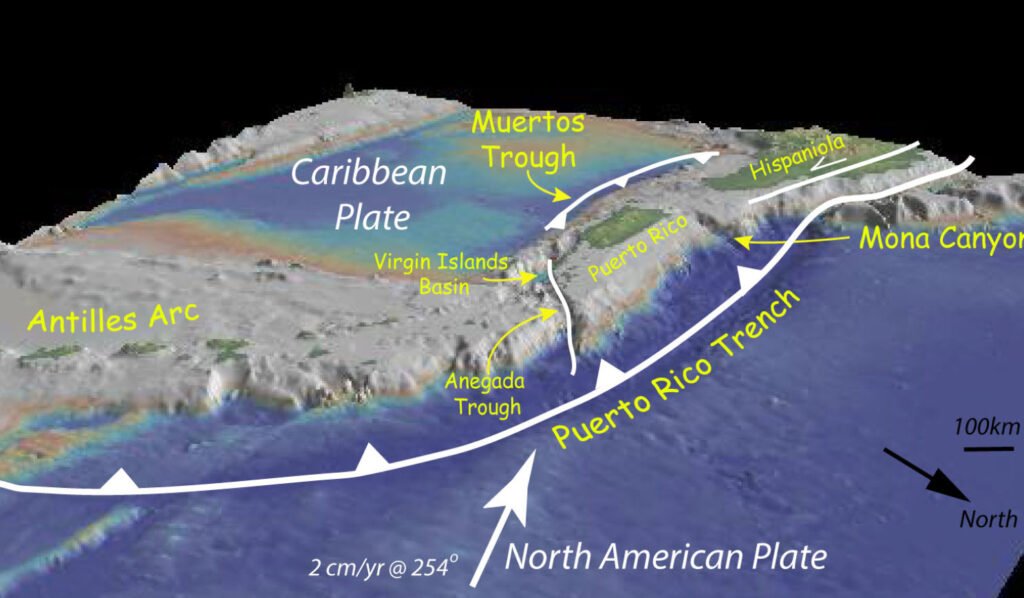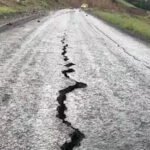The Earth’s crust is a dynamic and ever-changing surface, shaped by the movement of tectonic plates beneath its surface. One fascinating aspect of this geological dance is the presence of major trenches and ridges, often concealed beneath the vast expanses of our oceans.
In this article, we will explore into some of the most notable trenches and ridges around the world, each contributing to the intricate tapestry of Earth’s geology.
1. Mariana Trench:
Situated near the Mariana Islands in the Pacific, the Mariana Trench is the deepest trench globally, plunging to staggering depths of about 36,000 feet. It marks the convergence of the Pacific Plate and the Philippine Plate, offering a glimpse into the extreme depths of our planet.
2. Puerto Rico Trench:
Off the coast of Puerto Rico lies the Puerto Rico Trench, showcasing the deepest point in the Atlantic Ocean at approximately 27,493 feet. This trench forms on the boundary between the South American and Caribbean plates, providing insights into the geological interactions in the region.
3. Peru-Chile Trench:
Stretching over an impressive 3,700 miles, the Peru-Chile Trench is the world’s longest trench. With depths reaching 26,460 feet, it delineates the boundary between the Nazca Plate and the South American Plate, emphasizing the vast scale of tectonic activity in South America.
4. Pacific-Antarctic Ridge:
Acting as a natural divider between the Pacific and Antarctic plates, the Pacific-Antarctic Ridge is a sprawling mountain range. It extends off the coast of South America and plays a crucial role in shaping the Earth’s crust in this region.
5. East Pacific Ridge:
Marking the boundary between the Pacific and Cocos Islands plates to the north and the Pacific and Nazca plates to the south, the East Pacific Ridge is a significant underwater ridge system. It highlights the dynamic nature of plate tectonics in the eastern Pacific Ocean.
6. Aleutian Trench:
Extending from Alaska to the Kamchatka Peninsula, the Aleutian Trench results from the Pacific Plate sliding beneath the North American Plate. With depths reaching 25,600 feet, this trench is a testament to the geological forces shaping the northern Pacific region.
7. Mid-Indian Ridge:
Situated in the middle of the Indian Ocean, the Mid-Indian Ridge separates the African and Australian-Indian plates. This extensive mountain range provides insights into the geology of the ocean floor in the Indian Ocean.
8. Southwest Indian Ridge:
Connecting the African and Antarctic plates, the Southwest Indian Ridge joins the Mid-Indian and Southeast Indian ridges off the coast of Madagascar. Its topography exhibits a more regular pattern compared to its counterparts.
9. South America:
Comprising approximately 12% of the world’s land, South America is a continent with diverse geological features. The Andes in the west and the vast plains and plateaus in the east and central regions contribute to the continent’s unique geological makeup.
10. Mid-Atlantic Ridge:
Stretching about 7,000 miles through the middle of the Atlantic Ocean, the Mid-Atlantic Ridge is a prominent ridge system. Some of its peaks reach the ocean surface, forming islands like Iceland and highlighting the dynamic processes occurring beneath the Atlantic.
11. Ryukyu Trench:
Located near the Ryukyu Islands, the Ryukyu Trench marks the boundary between the Philippine Plate and the Eurasian Plate. With depths of 24,629 feet, it showcases the complex tectonic interactions in the western Pacific region.
12. Japan Trench:
East of Japan, the Japan Trench reaches depths of 27,929 feet and marks the boundary between the Pacific Plate and the Eurasian Plate. This region is known for intense seismic activity, emphasizing the geological dynamism of the area.
13. Kuril Trench:
Northeast of Japan, the Kuril Trench plunges to depths of 34,587 feet, resulting from the Pacific Plate sliding beneath the Eurasian Plate. The trench underscores the active subduction zones in this part of the Pacific region.
14. Philippine Trench:
Bordering the eastern Philippines, the Philippine Trench reaches depths of 34,578 feet, a consequence of the Philippine Plate sinking beneath the Eurasian Plate. This trench contributes to the complex tectonic setting in the western Pacific.
15. Kermadec-Tonga Trench:
North of New Zealand, the Kermadec-Tonga Trench is where the Pacific Plate meets the Australian-Indian Plate, reaching remarkable depths of 35,702 feet. This trench highlights the geological diversity in the southwestern Pacific region.
16. Southeast Indian Ridge:
Separating the Antarctic Plate from the Australian-Indian Plate, the Southeast Indian Ridge features a more regular topography compared to its counterparts. It plays a crucial role in shaping the ocean floor in this part of the Indian Ocean.
17. Java Trench:
South of Indonesia, the Java Trench is located between the Australian-Indian and Eurasian Plates. With depths of 24,440 feet, it represents the deepest point in the Indian Ocean, showcasing the intricate geological processes in this region.
Conclusion
The major trenches and ridges outlined above offer a glimpse into the dynamic nature of Earth’s crust, shaped by the relentless movement of tectonic plates. These geological features not only contribute to the topography of the ocean floor but also play a crucial role in understanding the Earth’s history and its ongoing processes.
Studying these trenches and ridges provides valuable insights into the complex world beneath the waves and enhances our understanding of the ever-evolving planet we call home.



